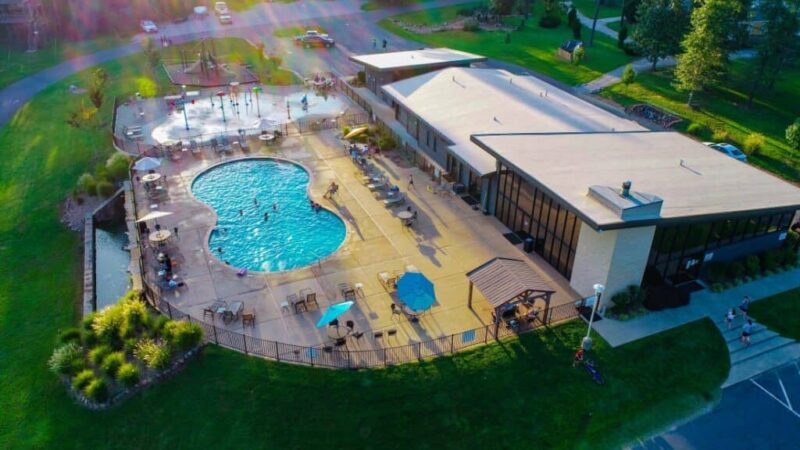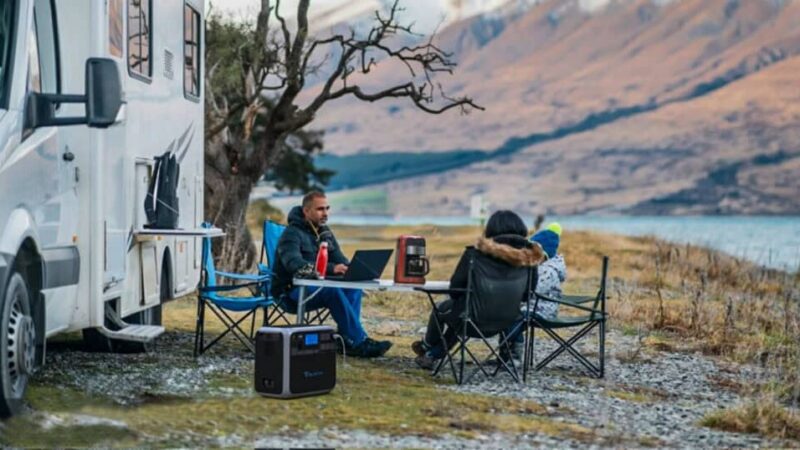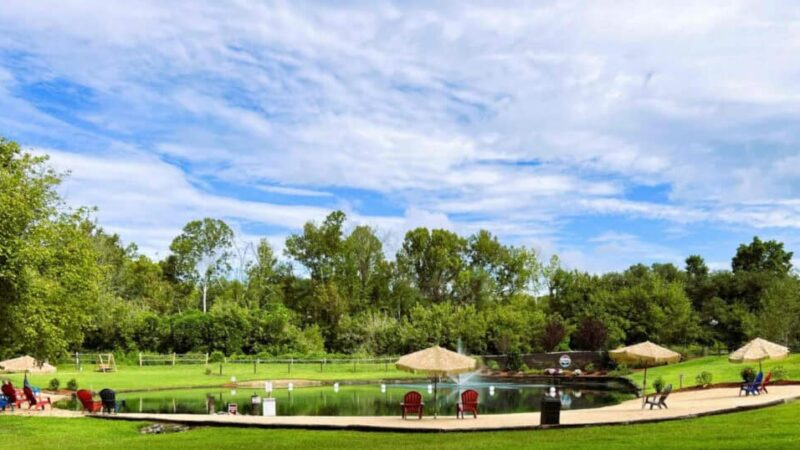RV Buying Guide 2024: How to Pick the Perfect RV for You

So many choices: Which RV is Right for You?
Whether you’ve been RVing for years, or you’re a newbie, deciding on the perfect RV is a big decision. And with the new model year releases happening as we speak, there are plenty of deals to be had right now. These days, there’s an RV for everybody, no matter what your camping style or budget. However, with thousands of models of RVs with even more floorplans, the options can seem overwhelming. It can be difficult to narrow down all the brands, models and floor plans to a single, perfect RV. This RV buying guide will help you simplify your search for that perfect RV by helping you to identify the essential factors that determine the right RV for you.
What’s Your RV Camping Style?
Not everybody has the same definition of camping in their RV. Some people love the luxury of having all the same amenities that they have at home (and then some) in a five-star RV resort environment. Others prefer a back-to-basics approach in an RV that can take them to remote spots that are close to nature (but still with all the comforts of a residential home). Of course, many RVers fall somewhere between these two extremes. There really is an RV for every style of camper. Knowing what style of camper you are will help you to choose one that fits your lifestyle perfectly. Here are a some of the most common ways to camp in an RV:
RV resorts/RV park camping: Resorts and RV parks give you all the benefits staying at a full-service resort. However, in an RV you have everything you need in your home on wheels, regardless of where you stay.
Off-Grid Camping: State parks, national parks, and public lands offer off-grid camping in remote areas. Boondocking lets you camp in more secluded conditions, but you’ll need an RV with the ability to live off-grid. You’ll want an RV with solar panels, a generator, and large holding tanks if you want to include boondocking in your camping activities.
Family or Solo RV Camping: The number of people camping with you will help to decide the size and layout of your RV. Consider features like sleeping capacities, dining areas, and bathroom facilities as well as cargo carrying capacity (CCC).
Full-time or extended road trips If you plan on full-time RV living or staying in your RV for extended periods, you’ll need an RV that offers a range of features such as a larger appliances, USB charging ports, Wi-Fi capability, and plenty of available storage space.
Pro Tip: Regardless of where you plan to RV, RV LIFE Campgrounds is a great resource to research your best options. RVer-submitted ratings, amenities, photos, and reviews will help you make the right decision.
Which RV Type is Right for You?
Each type of RV has advantages and disadvantages. For example, a 40-foot-long Class A motorhome has lots of space and plenty of luxurious amenities. It’s also a great choice for most RV resorts. However, a big downside is that a 40-foot Class A won’t fit into many national or state park campsites. A pop-up camper’s compact size makes it easy to tow and park pretty much anywhere. It’s a great choice for state parks. However, pop-up campers don’t have much storage space and don’t offer much in the way of luxury.
There are always trade-offs with any type of RV. Here’s a list of the different RV types. We’ve also included a brief description of what their great at and also what to avoid doing in them:
Class A Motorhome
A Class A motorhome looks more or less like a bus. They’re often filled with loads of luxurious amenities and features. These make traveling and camping very much like staying at a nice resort. They also have more storage than most other RVs. Class A motorhomes are built for extended road trips or full-time RV living. Of course, you can always use them for occasional weekend camping trips, too. Class A motorhomes can range from between 23 feet and 50 feet long. Most are capable of dinghy towing a vehicle for added convenience.
Many Class A motorhomes are built on a beefy chassis. They have suspension systems that offer a smooth ride, even on bumpy roads. However, they really aren’t designed for off-the-beaten-path camping. In other words, boondocking in off-road camping areas in any Class A will quickly lead to expensive towing/repair bills. But if you’re looking for a luxurious RV to explore the country, a Class A is a great choice. Of course, with pricing that starts at around $100,000, Class A motorhomes aren’t for everybody.
Class B Motorhome
Class B motorhomes are fun little campers that have been built into a van chassis. They range from basic home-built van conversions to luxurious compact motorhomes that have an astounding number of features and amenities. WIth solar power systems, air conditioning, and even diesel furnaces, Class B motorhomes are very versatile. They can get you out on weekend camping trips, on- or off road. You can also take them on cross-country treks, camping pretty much wherever a van will fit. People who are comfortable living in a smaller space may also full-time in their Class B.
If you’re a solo RVer or an RVing couple, a Class B might be just what you’re after for comfortable expeditions. However, many Class B’s simply doesn’t have enough space for extended family-camping adventures.
Class C Motorhome
A Class C motorhome is built on a powerful van (or truck) chassis. They are easily recognized by the bunk over the cockpit area. The coach part of the Class C is significantly longer and taller than a Class B. It almost always features at least one slideout to create more space. Most newer Class C’s are equipped with a generator and at least 200 watts of solar power. However, they may not be as luxurious as a Class A (with some exceptions, of course). And, to carry so much weight, most Class C’s also feature an enhanced suspension that does well on boondocking adventures.
A Class C is a good choice for extended road trips and camping with or without kids. Even though many full-timers choose a Class C, this type of RV may not be designed to withstand the rigors of heavy use.
Super C Motorhome
Technically part of the Class C group, a Super C motorhome is built on a powerful heavy-duty truck chassis that can handle a lot of weight. This means amenities can be heavier than those found in a traditional Class C. Some of these might include heated, tiled floors; shower surrounds; or a washer and dryer. Super C RVs can have just as many top-of-the line amenities as a Class A motorhome. Plus, they can easily tow a trailer or a mid-size pickup with ease. And, there are many 4WD versions available, though the size and ground clearance definitely need to be considered before carving the trails.
Super C’s have all of the advantages of a Class A motorhome. However ,they also share the same downside in that their size can make them difficult to park in a national or state park.
Fifth-wheel
Fifth-wheel trailers feature part of the living- or sleeping space housed in the front of the RV. This part of the RV sits over the bed of the tow vehicle. The lightest fifth-wheels can be towed with a half-ton pickup under ideal conditions. However, just because you can doesn’t mean you should. Towing a fifth-wheel with a 3/4-ton (or better) offers more safety and stability on rough roads or when the weather turns windy.
Manufacturers design fifth-wheels for a variety of uses. Some fifth-wheels are meant to be lived in full-time for extended periods, while their light-duty counterparts are meant for fun family camping adventures. Fifth-wheels that are designed for full-time or extended living often contain numerous high-end amenities. These might include multiple baths, a gourmet kitchen, and a spacious living room with a massive TV. Light-duty fifth-wheels tend to have simple amenities, smaller kitchens, and basic entertainment packages. However, they often offer more sleeping space than their heavier counterparts. Some fifth-wheels make fantastic destination RVs, which can be a luxurious alternative to a sticks and bricks cottage or guest suite.
Of course, the downside of fifth-wheel trailers is their size. The largest fifth-wheels usually won’t fit into campsites at state and national parks. A fifth-wheel can also be hard to back and tow for those who are new to towing. But with a little practice, many RVers consider them easier to tow (and back) than travel trailers.
Travel Trailer
Travel trailers range from tiny, simple teardrop trailers to luxurious 40-foolers and all points in between. Manufacturers primarily tend to build travel trailers for weekend use. Some travel trailers are built for exploring the open road, while others are designed with rugged components that can handle (relatively) off-road adventures. Travel trailers tend to be built as light as possible for their intended use. However, whenever they are towed anywhere, everything inside shakes and jiggles over every little bump in the road. This causes components to loosen remarkably quickly. Therefore, inspecting everything that could loosen after you reach your destination is an essential task.
Small travel trailers (shorter than 20 feet) are easy to tow and readily fit into driveways, campsites, and anywhere else you want to park. Travel trailers that are longer than 25 feet can be difficult for new RVers to tow and back. Trailers shorter than 30 feet fit into national and state park campsites; however, travel trailers longer than 30 feet are best for larger campsites and RVers with towing experience.
Destination Trailers
If you’re looking for a trailer to park for full-time use or as guest accommodations, a destination trailer might be just what you’re after. Destination trailers are more like tiny homes than any other type of trailer. They have all the amenities you need to go glamping in luxury. They’re mobile, but are built to be left in one place and lived in for extended periods.
Pop-Up Trailers
In addition, easy towing pop–up trailers give RVers a back-to-nature style glamping experience wherever they go. These versatile little trailers expand to many times their size when they aren’t being transported. That way, they give you plenty of space, without being a pain to tow. They’re a good choice for families and those who are new to the RV lifestyle. WIth loads of sleeping space and all the basic amenities you need, these fun little campers are perfect for casual weekend camping trips, pretty much anywhere you want to go.
Truck Campers
Truck campers that fit in the bed of a pickup are perfect for road trips and camping adventures because they can often go anywhere a pickup can. They usually sleep between two and four people, and amenities vary, but most have a small kitchen and wet bath. There are even some upper-scale campers that have slideouts and sleeping space for five or more!
Naturally, truck campers don’t offer a lot of storage or interior space. But if you’re looking for an RV that can take you most anywhere, truck campers should be on your list of possibilities.
Find the Right Floorplan
Having the right floorplan can make or break how much you enjoy your RV. Don’t rush through the process and go to the dealer to look at floorplans right away. Figure out how many campers you’ll have, and then start your research online at RV websites. Make a list of floorplans of different models that could potentially work for you.
WIth that list in hand, head to dealers that sell the brands you like. Ask to see the RV floorplans on your list. Spend time inside the RV and try everything out.
By that I mean, open and close the cabinets, pull out the sofa bed, stand in the shower, and check out all the amenities that you’re interested in. After that, you’ll be able to narrow down your list to a floorplan that’s going to meet your needs.
Find an RV That Fits Your Budget
Buying an RV that fits your budget is essential. After all, buying an RV is an investment. There’s no point in buying in an RV if it’s going to cause you financial stress. It’s important to know what price fits you budget and then sticking to it, no matter how low those monthly payments may seem.
- Purchase Price: RVs come in a wide range of prices, starting at around $10,000 for a budget-friendly pop-up trailer to more than $1 million for a luxury Class A motorhome. It’s a good idea to determine what you can easily afford before you even begin looking at RVs.
- Maintenance and Repair Costs: All RVs require regular maintenance and occasional repairs. You can save money by doing some of these tasks yourself, while others will need to be performed by a certified RV technician. In the case of a motorized RV, you’ll also need a mechanic for repairs to the chassis and drivetrain. Professional maintenance on an RV can cost between $500 and $3,000 annually.
- Financing Options: If you need financing, explore different loan options and interest rates. Keep in mind that most RV dealers will have a finance department that can offer financing at competitive rates.
- New Or Used? A new RV offers the latest in new technology, modern decor, and useful amenities, as well as the knowledge that you’re it’s first owner. However, buying a (lightly) used RV can be a sound financial decision, especially if you’re on a budget.
Develop Your Driving Skills
Driving a motorhome or towing an RV can be intimidating for those who don’t have experience. However, there are numerous RV driving schools and courses throughout the country that can teach you everything you need to know. If you’re new to driving, towing or backing an RV, it’s a good idea to sign up for a course. Especially before you attempt to drive or tow your new RV home.
Learn All About Towing Capacity
Your tow vehicle’s towing capacity includes more than its tow rating. Towing capacity also includes the payload capacity. This information is available in your vehicle’s operating manual. Always calculate your vehicle’s ability to tow using the RV’s fully loaded weight (as determined at a scale), rather than its unloaded weight.
What Features and Amenities do You Need?
RVs are designed with a wide range of amenities. That’s because everyone has their own idea of what comfortable camping looks like. For some people having an outdoor kitchen and an outdoor TV is essential. To others, a spacious spa shower is important. Storage space is in an RV is also really important to take note of. How much gear do you plan to bring? Here are just a few other RV amenities and features that you might want to consider:
- 12-volt RV refrigerator (runs on batteries)
- Tankless water heater
- Water Miser to help conserve water
- Off-road suspension package
- Power A-frame jack
- Power leveling system
- Prewired Solar, Starlink or Wi-Fi
- Office area
- Power theater seats
- Back-up camera
- 360-degree- or side-view cameras
- Day/night shades
- Outdoor kitchen
- Exterior TV/kitchen area
- Washer/dryer
- Basement storage capacity
- Sleeping area capacity
The Spice of Life
More people bought RVs in the last 5 years than ever before. Manufacturers have responded to this uptick in demand by offering RVs with floorplans to suit every camping style and budget. RVs are available with an astounding array of amenities and features. All these choices can seem a little overwhelming. Especially if you’re new to RVing, or haven’t camped in an RV for years. However, examining your needs and camping style, coming up with a budget, and deciding on a floorplan will help you simplify your decision making process and pick an RV that’s perfect for you.
The post RV Buying Guide 2024: How to Pick the Perfect RV for You appeared first on RV LIFE.
Source: https://rvlife.com/ultimate-rv-buying-guide-how-to-pick-the-perfect-rv/






